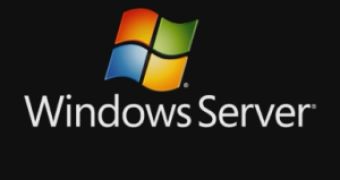The Windows 7 client is not the only operating system from Microsoft released to manufacturing. The Redmond company has literally joined its Windows client and server operating systems at the hip following the release of Windows Vista Service Pack 1 and Windows Server 2008 RTM/SP1, and the strategy continues with their successors. Windows Server 2008 R2, formerly codenamed Windows 7 Server, has also reached RTM stage along with Windows 7. Oliver Rist, technical product manager, Windows Server Marketing, has confirmed officially that Microsoft signed off the code for both Windows 7 and Windows Server 2008 R2 on July 22nd.
The “latest release of Windows Server 2008 R2 is now blessed by engineering as ready for the manufacturing process. We're talking final code. Sun shining, birds singing, children dancing in the streets. With evaluation software available for download in the first half of August and the full product available to customers with Software Assurance in the second half of August, RTM is more than just an engineering milestone. Occurring in lock-step with the release of the Windows 7 RTM, these two platforms are now ready for our partners to start testing and installing on their hardware. And that lock-step isn't a coincidence, it's a design goal,” Rist noted.
Microsoft has been little shy of advertising Windows 7 and Windows Server 2008 R2 as better together. And the software giant has reasons for doing so. Fact is that some of the latest features in Windows 7 and in Windows Server 2008 R2 can only be used if both client and server platforms run side by side in the same IT infrastructure. Among the most applauded features justifying using Windows 7 and Windows Server 2008 R2 in concert are: DirectAccess, BranchCache and Remote Desktop and Applications.
“DirectAccess, for example, provides secure, always-on access to corporate networks no matter from what network a client might be connecting. Better yet, it provides a two-way relationship allowing desktop admins to manage clients the same way whether they're local or remote. BranchCache allows users in remote offices to cache corpnet data locally, providing a better work experience for remote workers while simultaneously lowering expensive WAN bandwidth costs. Remote Desktop and Applications - Windows Server 2008's Terminal Services has now evolved into R2's Remote Desktop Services, and it integrates so tightly with Windows 7 that administrators will be able to roll out virtualized applications and even entire desktop environments without users being able to tell that these tools aren't running locally. It's fast and can even be managed via policy,” Rist added.

 14 DAY TRIAL //
14 DAY TRIAL //